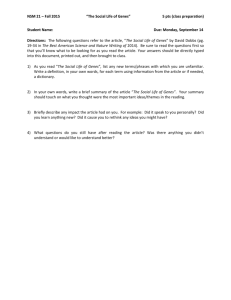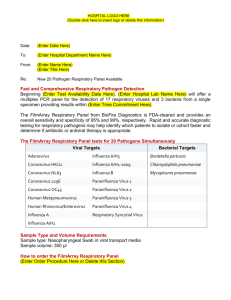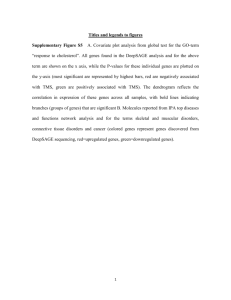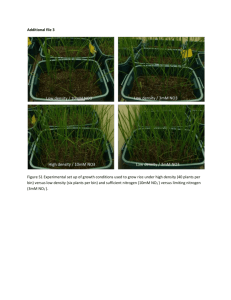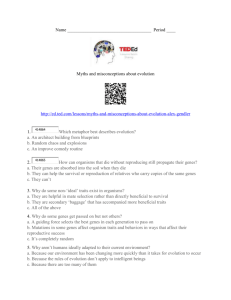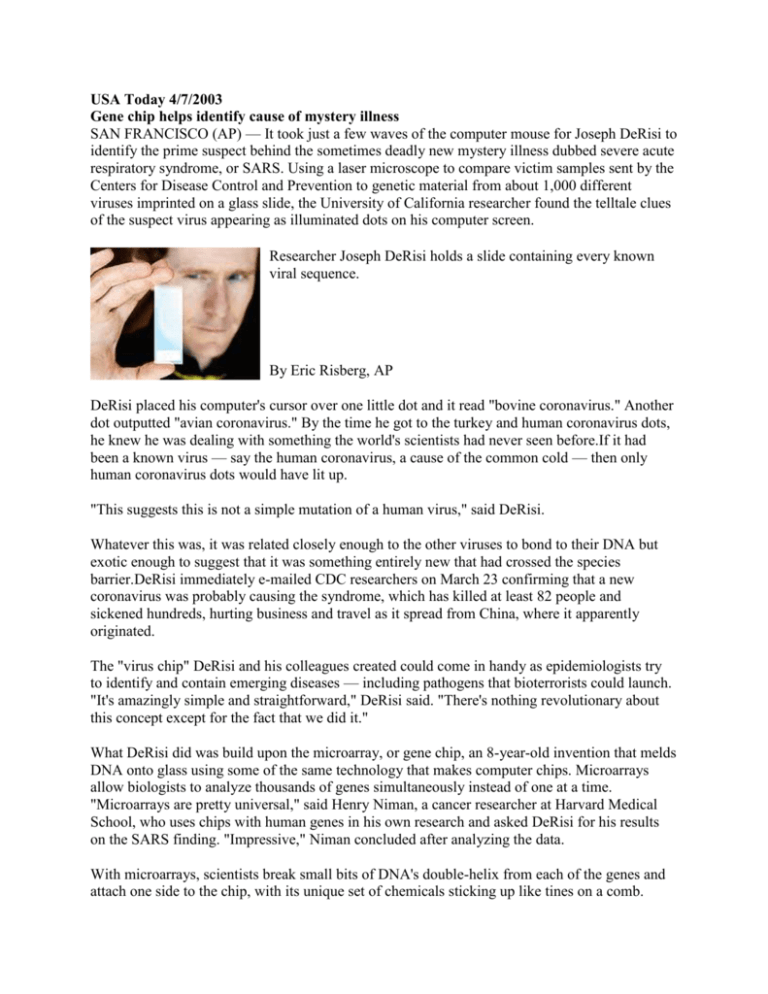
USA Today 4/7/2003
Gene chip helps identify cause of mystery illness
SAN FRANCISCO (AP) — It took just a few waves of the computer mouse for Joseph DeRisi to
identify the prime suspect behind the sometimes deadly new mystery illness dubbed severe acute
respiratory syndrome, or SARS. Using a laser microscope to compare victim samples sent by the
Centers for Disease Control and Prevention to genetic material from about 1,000 different
viruses imprinted on a glass slide, the University of California researcher found the telltale clues
of the suspect virus appearing as illuminated dots on his computer screen.
Researcher Joseph DeRisi holds a slide containing every known
viral sequence.
By Eric Risberg, AP
DeRisi placed his computer's cursor over one little dot and it read "bovine coronavirus." Another
dot outputted "avian coronavirus." By the time he got to the turkey and human coronavirus dots,
he knew he was dealing with something the world's scientists had never seen before.If it had
been a known virus — say the human coronavirus, a cause of the common cold — then only
human coronavirus dots would have lit up.
"This suggests this is not a simple mutation of a human virus," said DeRisi.
Whatever this was, it was related closely enough to the other viruses to bond to their DNA but
exotic enough to suggest that it was something entirely new that had crossed the species
barrier.DeRisi immediately e-mailed CDC researchers on March 23 confirming that a new
coronavirus was probably causing the syndrome, which has killed at least 82 people and
sickened hundreds, hurting business and travel as it spread from China, where it apparently
originated.
The "virus chip" DeRisi and his colleagues created could come in handy as epidemiologists try
to identify and contain emerging diseases — including pathogens that bioterrorists could launch.
"It's amazingly simple and straightforward," DeRisi said. "There's nothing revolutionary about
this concept except for the fact that we did it."
What DeRisi did was build upon the microarray, or gene chip, an 8-year-old invention that melds
DNA onto glass using some of the same technology that makes computer chips. Microarrays
allow biologists to analyze thousands of genes simultaneously instead of one at a time.
"Microarrays are pretty universal," said Henry Niman, a cancer researcher at Harvard Medical
School, who uses chips with human genes in his own research and asked DeRisi for his results
on the SARS finding. "Impressive," Niman concluded after analyzing the data.
With microarrays, scientists break small bits of DNA's double-helix from each of the genes and
attach one side to the chip, with its unique set of chemicals sticking up like tines on a comb.
Researchers then pour solutions containing other broken strands of DNA to see which strands
bond together.
Until now, most microarrays contained human genes. The ultimate goal with these tools, of
course, is to improve human health, so this was a natural starting point. It also helped that the
map to most human genes is freely available on the Internet, thanks to the Human Genome
Project. Thousands of other genomes of animals, plants and germs have also been charted in
recent years. Except for a few notable exceptions, like the mouse genome, a corresponding boom
in microarrays containing those nonhuman genes hasn't occurred. About two years ago, DeRisi
and two colleagues brainstormed about what tools would be vital to virus hunters. Instead of
outfitting chips with human genes, the trio decided to put virus genes on their microarray instead.
Then, as now, there were no commercially available virus chips. So DeRisi and David Wang set
up their own "home-brew operation," as DeRisi calls it. Wang, a 32-year-old postdoctoral
student at the Massachusetts Institute of Technology, set about the painstaking process of etching
the genetic material of all mapped germs on to the first chip. DeRisi built the robot needed to
pick up each sample to be tested and precisely dropped on the chip.
"A ton of software also needed to be written," DeRisi said. That's because the slide is best
viewed on a computer screen after amplification under a laser microscope. The software also
helps DeRisi interpret what he's seeing.
DeRisi at the time also presented the idea to the intellectual property office at the University of
California, San Francisco. He said the lawyers saw little commercial value in the invention and
declined to pursue a patent. In fact, the virus chip created scant attention in November when the
researchers published word of it in the science journal Proceedings of the National Academy of
Sciences. That all changed two weeks ago when CDC director Dr. Julie Gerberding told a packed
news conference that the coronavirus was probably the cause of SARS. She said DeRisi's chip
was "the absolute state-of-the-art probe for viral genes" and proved indispensable in the race to
identify the cause of the pneumonia-like infectious disease.
The new coronavirus has not been officially declared the cause, but CDC researchers said they
are "90%" sure it's the culprit. DeRisi has now become something akin to a rock star in science.
Media outlets clamor for interviews in his shiny new lab, opened in February at UCSF's new
biotechnology center. He's deluged with telephone calls and e-mails from scientists around the
world asking for advice and pitching potential collaborations, including projects that could be
used to combat bioterrorism. But for now, DeRisi is staying focused on his original research,
which involves finding a malaria cure and identifying hundreds of unknown viruses that cause
respiratory ailments that are more common than SARS.
"I really want to thoroughly catalogue the viral flora of our environment," DeRisi said.
Copyright 2005 The Associated Press. All rights reserved. This material may not be published,
broadcast, rewritten or redistributed.

